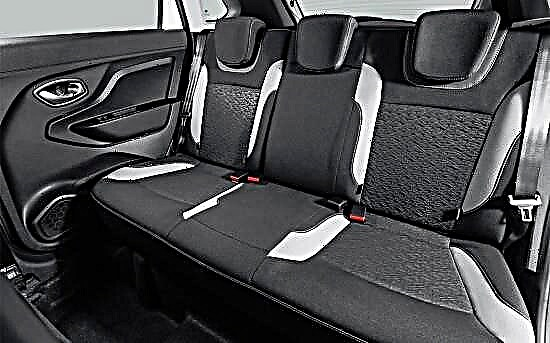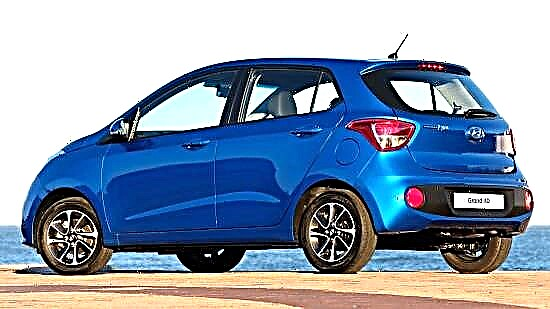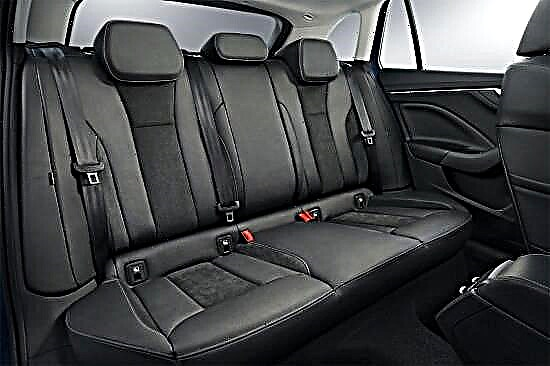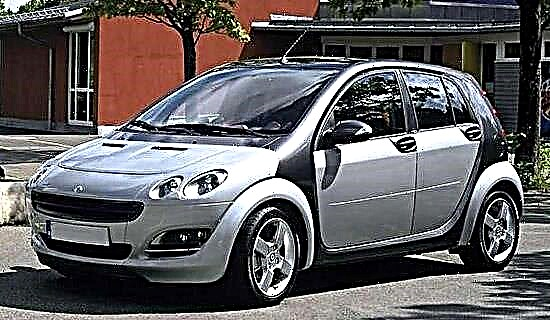The five-door Smart ForFour hatchback was produced in only two years and two months - from April 2004 to June 2006. The car was produced in Holland at the NedCar plant in cooperation with Mitsubishi Motors. In order to keep production costs down, Smart ForFour has supplied many components from the 2003 Mitsubishi Colt.
Either the "hybrid" turned out to be unsuccessful, or something else, but the model was not too salable, even after the release in 2005 of its updated branded German version from Brabus, which was made sporty. Due to the low activity of sales, the production of the Smart Forfo model was suspended at the end of 2005, and in June 2006 it was discontinued altogether.

The Smart ForFour was not quite the usual model, compared to the rest of the products of Daimler's brainchild Smart. Neither the city super popular in Europe and, especially, in the States - Smart Fortwo, which by 2006 had already produced more than 500 thousand copies in various body modifications and trim levels, nor the sports Roadster, which also found many admirers over nine years of production, were not particularly similar to their brother.

Unusual for this automaker, the rather large dimensions of Smart ForFo, as well as four seats in the cabin (instead of the usual two), could have scared off a little.
Overall dimensions of the car Smart Forfour:
- Length - 3752 mm
- Height - 1450 mm
- Width - 1648 mm.
In addition, this five-door hatchback had a solid curb weight of 975 kg with a maximum allowable value of 1460 kg. Moreover, Smart Forfour, after the sporty Roadster with its forty-five-liter trunk, seemed like a real minivan to many fans of the brand. The Smart Forfour trunk in the standard position held almost 300 liters. The rear row seats could be folded neatly and moved forward slightly. Then the luggage compartment reached a "gigantic" size of 910 liters.
Well, since we were talking about the technical characteristics of Smart ForFour - an inline four-cylinder engine with a volume of almost 1.5 liters produced, in general, a good power of 95 horsepower or almost 70 kW in “watt” equivalent. This ratio of engine power and curb weight of the car is quite acceptable. Moreover, this is legitimate not only for the first attempt by Smart to release a full-fledged car, but also for real minivans. For example, the Honda FR-V (engine power 150 hp and curb weight 1484 kg) or Toyota Corolla (engine power 129 hp with curb weight 1420 kg) has a lower curb weight / engine power ratio. These cars were released in the same year as the Smart Forfour. So, the car had enough engine power. Moreover, the fuel consumption was incomparable. Even with the most “difficult” city cycle, the economical Japanese sixteen-valve Mitsubishi Colt CZT engine consumed no more than 7.5 liters per hundred. The mixed mode required 5.8 liters per 100 km, and fuel consumption on the highway was reduced to 4.8 liters per 100 km. In general, the thrust-to-weight ratio was enough for the car.
Moreover, after the German tuning in Brabus, a 177-horsepower engine started working on the car, already a sports version, which accelerated almost a ton of the car's weight to a hundred - in 6.9 seconds. The maximum speed was 221 km / h.

As for the other equipment of the Smart Forfo car, everything was in order here too. Smart, as always, ensured maximum safety for their vehicles. Electric power steering and power brakes plus a stabilization system for dynamic ESP in conjunction with the most accurate ABS system worked like a Swiss watch. When cornering, the car did not skid at all. The imperceptible and lightning-fast operation of the ESP system made it possible to adjust the car's systems so that, regardless of the driver, it adjusted the course by briefly braking both wheels on the starboard or left side, or one front and rear. The ESP electronic control unit easily and quickly processed information about the course, and in a critical situation even "choked" the engine, simply limiting the fuel supply to the injector.
Together with this protection, four airbags were provided in the car, as well as a “safety cell” in the form of a steel frame that limits the deformation of the passenger compartment. As a result, the Smart ForFour crash tests were passed with a bang, as well as the entire line of Smart cars.
The convenience of the salon in Smart Forfour has not been forgotten either. Standard climate control, plus optional heated seats and leather upholstery along with an all-glass panoramic roof, integrated telephony, light and rain sensors to automatically adjust dashboard lights, lighting and windshield wipers.
The price of a Smart ForFour car, at least for Europeans, was not that high - the price for the most swinging version of Passion reached 22,000 euros. Unsuccessful sales can probably be explained by the fact that Smart released a model for a rather capacious, but already oversaturated with models of other brands, segment of the market.
However, this is not the end of the history of the Smart Forfour model. Rainer Schmückle, director of Mercedes-Benz, announced the upcoming resumption of production of the model. According to rumors, this comeback may take place as early as 2013.











